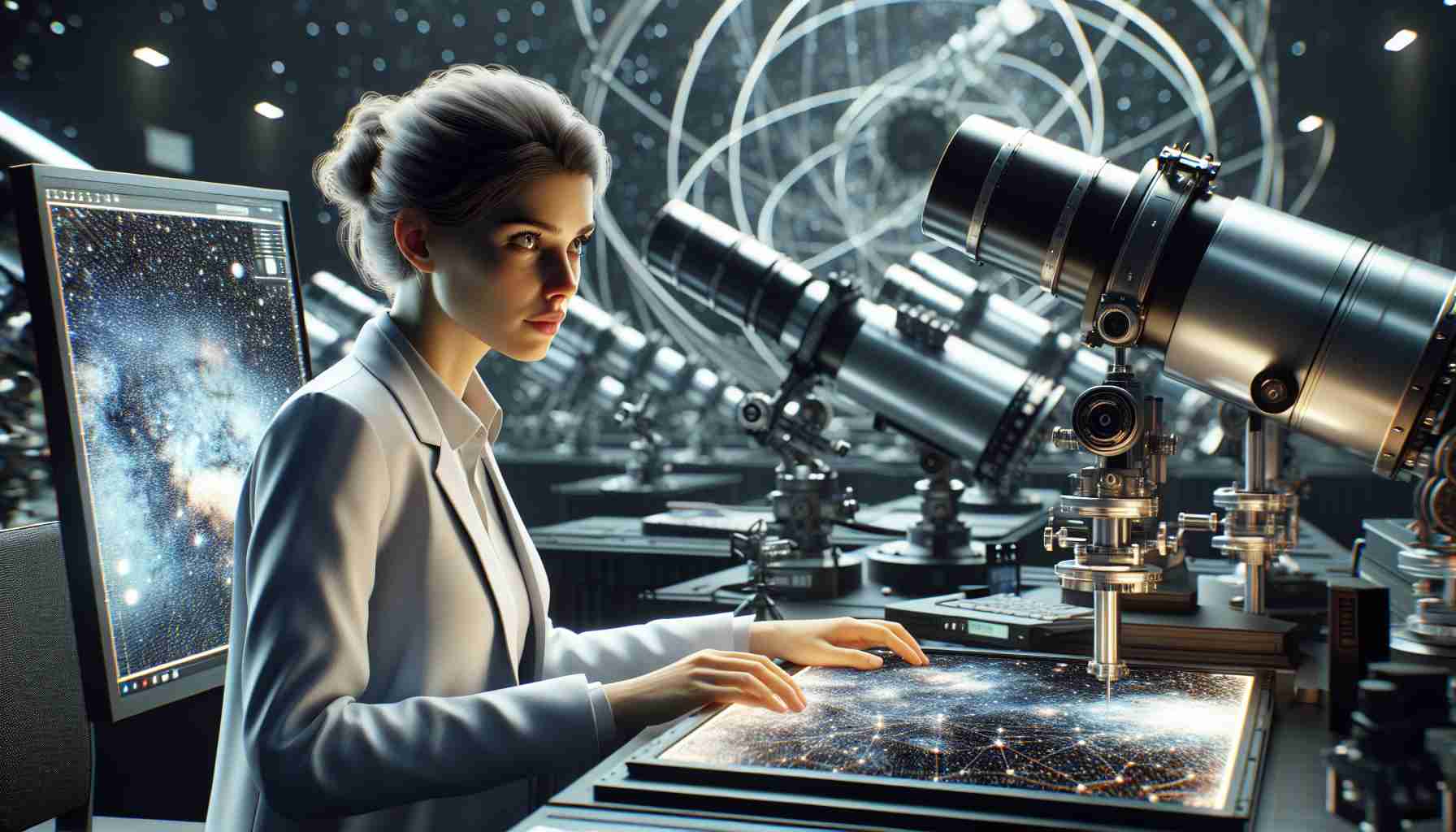- Professor Dr. Isobel Hook is awarded the 2025 Caroline Herschel Medal for her contributions to astrophysics.
- Her research on distant supernovae has advanced our understanding of the universe’s accelerating expansion.
- Hook is instrumental in developing major astronomical instruments, such as the Extremely Large Telescope (ELT).
- She has collaborated on key projects like the Gemini Multi-Object Spectrograph and 4MOST.
- Her work has accrued over 47,000 citations, underlining her influence in the field.
- As a leader within the Lancaster Astrophysics group, she mentors future astrophysicists, fostering curiosity and discovery.
- Hook’s recognition connects her to a lineage of pioneering women in astronomy, celebrating both her achievements and the broader legacy.
Under the vast celestial dome, where mysteries swirl and cosmic whispers beckon, Professor Dr. Isobel Hook has carved out her own luminous path. As the recipient of the 2025 Caroline Herschel Medal, she stands as a beacon for women in astrophysics, her journey through stardust transforming our understanding of the universe.
Her work with distant supernovae acts like a telescope, not just magnifying these stellar explosions, but unraveling the secrets of the universe’s accelerating expansion. In an arena where light travels at intergalactic speeds, Professor Hook has played a pivotal role, helping develop tomorrow’s colossal astronomical instruments like the Extremely Large Telescope (ELT). Her leadership in this endeavor and others, including the Gemini Multi-Object Spectrograph and 4MOST, fortifies how we gaze deeper into the firmament.
But her contributions extend beyond technology and research papers, amassing more than 47,000 citations; she cultivates the future. Within the Lancaster Astrophysics group, her guidance ignites curiosity, sowing seeds of wonder and discovery in budding astrophysicists. This commitment to nurturing minds resonates with the medal she receives—a celebration of both historic and present brilliance.
Beneath the night sky, where Caroline Herschel once charted new horizons, Hook joins a lineage that defies time, reconciling past aspirations with the infinite potential of today. Her enthusiasm deems her not only an architect of scientific advancement but an inspirer of dreams. The medal’s shine reflects not just her personal achievements but a collective legacy, calling us to embrace the stars with renewed ambition. As we look skyward, guided by her trailblazing spirit, we are reminded that the cosmos, vast and intricate, is ours to explore.
Unveiling the Cosmos: How Professor Dr. Isobel Hook is Shaping the Future of Astrophysics
Additional Information about Professor Dr. Isobel Hook’s Contributions
# How-to: Becoming an Astrophysicist
To follow in the footsteps of Professor Dr. Isobel Hook, aspiring astrophysicists should focus on obtaining a strong educational background in physics and mathematics. Pursuing advanced studies, including a Ph.D. in astrophysics or a related field, is essential. Involvement in research projects, internships, and contributing to scientific papers also plays a critical role in establishing oneself in the field.
# Pros and Cons of Being a Woman in Astrophysics
Pros:
– Opportunities to address gender diversity and become a role model, inspiring future generations.
– Collaboration with esteemed colleagues and institutions globally.
– Gaining recognition and awards, like the Caroline Herschel Medal, that celebrate contributions to science.
Cons:
– Navigating a traditionally male-dominated field can present challenges.
– Potential for gender bias or unequal opportunities in certain academic and professional environments.
# Market Forecasts and Trends
The field of astrophysics is witnessing transformative growth, driven by advancements in telescope technology and data analysis. The coming decade is expected to see significant funds allocated to space exploration projects and initiatives. Instruments like the Extremely Large Telescope (ELT) are anticipated to unveil new astronomical phenomena, driving interest and investment in the sector.
# Reviews of the Extremely Large Telescope (ELT)
The ELT is highly anticipated within the scientific community for its potential to provide unprecedented insights into the universe. Reviews highlight its advanced design for capturing high-resolution images and data that can illuminate topics like dark matter and the formation of galaxies.
# Controversies and Discussions
Debates often arise regarding the allocation of funding between deep-space exploration and addressing immediate earthly concerns. Discussions emphasize the balance between pursuing knowledge and maintaining societal priorities.
# Comparisons of Astronomical Instruments
The ELT, Gemini Multi-Object Spectrograph, and 4MOST, where Professor Hook contributes, are compared based on their size, capacity, and focal points. The ELT, rivaling space telescopes, boasts a massive mirror for deep universe observations, while instruments like 4MOST offer massive survey capabilities, each instrument offering unique insights.
# Use Cases and Innovations
These telescopes aid in exploring cosmic phenomena such as the birth and death of stars, galaxy formation, and cosmic expansion. Innovations in adaptive optics and data processing enhance their effectiveness in capturing clear, detailed images.
# Limitations
Despite advancements, challenges such as atmospheric interference and limited funding can restrict scope and speed of new discoveries.
# Security Aspects
With the increasing data volumes produced by astronomical instruments, data security and management are pivotal. Ensuring data integrity and protecting intellectual property are essential focuses in astrophysical research.
# Sustainability in Astrophysics
Sustainability in constructing and operating astronomical facilities is a growing concern. Efforts focus on minimizing environmental impact and optimizing energy use in observatory operations.
# Predictions for the Future
Experts predict a surge in international collaborations for space exploration and shared knowledge initiatives. Artificial intelligence is expected to play a larger role in processing the vast amounts of astronomical data, advancing discoveries.
# Tutorials and Educational Resources
Numerous online platforms offer courses and lectures from leading astrophysicists, making it feasible to learn the fundamentals of astronomy and stay updated with recent developments in the field.
Important Questions and Insights
How does Professor Hook’s work impact the study of the universe?
Professor Hook’s research on distant supernovae and her involvement in developing advanced telescopic technologies significantly contribute to understanding cosmic expansion and evolution. This paves the way for new theories and models concerning the universe’s origins and future.
Why is the Caroline Herschel Medal significant?
The Caroline Herschel Medal honors notable contributions from women in astrophysics, enhancing visibility, and encouraging more women to pursue careers in science, which is essential for increasing diversity and innovation in the field.
Related Links
– European Southern Observatory (ESO)
– Gemini Observatory
– Lancaster University
By celebrating Professor Dr. Isobel Hook’s achievements and exploring the vast possibilities her work opens, we continue to nurture an abiding fascination with the cosmos, encouraging future generations to contribute to the boundless journey of discovery that astronomy offers.












